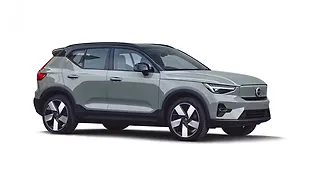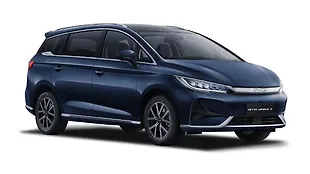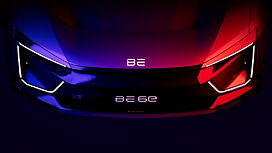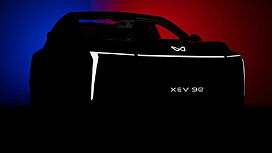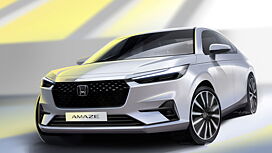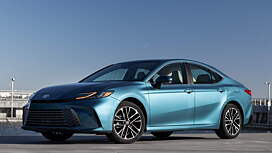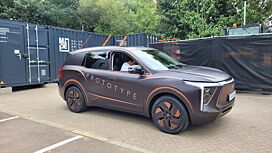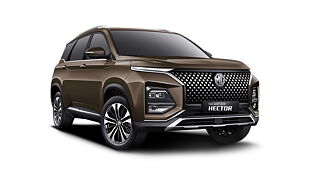Why would I buy it?
- It’s a tech-fest
- Many first-in-class equipment
- Looks attractive both inside and out
Why would I avoid it?
- No diesel engine option
- Well-established competition poses a threat
Verdict

MG is surely enjoying success in the Indian market with its high-riding offerings. After the Hector and the Gloster, here is the newcomer in MG’s (conventionally-powered) crossover line-up – the Astor. Are we seeing some sort of naming pattern here? Nonetheless, the India-spec version of the updated ZS sold in the international market, the Astor has a few aces up its sleeves to succeed in the lucrative segment it is entering – just like the Hector and the Gloster before it. Apart from the first-in-segment Level 2 autonomous driving aids, it also has an AI-based virtual assistant integrated with its connected car tech. So, the Astor is future-ready, tech-savvy, and has a modern cabin that looks and feels more premium as well. But, under the skin, does it have what it takes to become a runaway success for MG?

Engine and Performance
7.5 / 10

With the Astor, MG India is offering two engines and three gearbox choices. The 1.5-litre naturally-aspirated petrol is new and puts out 108bhp and 144Nm and can be had either with a five-speed manual or a CVT automatic. What we are driving here is the second engine – a 1,349cc three-cylinder turbo-petrol which MG likes to call 220Turbo owing to the 220Nm it makes. Paired with the sole option of a six-speed automatic, this SAIC’s global engine produces 138bhp at 5,600rpm. This motor is available in other countries in a more powerful state of tune as well.

Crank it up and the motor settles into a gentle purr with mild vibrations felt around the seats, gear lever, and on the steering. But these vibrations are felt only when you go keenly looking for them, otherwise, on idle, the SAIC-sourced motor feels pretty refined. Get going and the three-cylinder makes itself apparent with its din. There’s enough grunt you’d expect from a turbocharged petrol engine at lower rpm to potter around at city speeds even before the turbo kicks in. Even the torque converter likes to shift before 2,000rpm. But give it some beans and it will easily hold a gear to redline.

On the flip side, past the 4,000rpm mark, the motor tends to feel out of breath. Although it mounds speed quickly and can hold highway speeds easily, the revs take their time to build up and there’s unbidden noise from the three-banger heard inside the cabin. When driven unhurriedly, the torque-converter shifts nicely but the same cannot be said when it is rushed. The automatic makes its shifts (especially in kick down) felt when wrung hard. It’s best to let the turbo spool up – which happens around 3,000rpm – and make use of the boost rather than go full pedal-to-the-metal with this 220Turbo engine.

Ride and Handling

Full disclosure, we drove the MG Astor at India’s sole F1 racetrack – the BIC. So obviously, we weren’t able to fully judge the ride quality on the most superior piece of tarmac you’d find in the entire country. At slow speeds on the ring road of the track, it managed to soak up erratic speed breakers nicely. And high-speed stability was also impressive on the back straight of the racetrack. We’ll have to wait for a proper road test to better evaluate the Astor on public roads.

As for the steering, there are three modes of adjustment – Urban, Normal, and Dynamic – with each mode varying the weight of the steering wheel. Going two-and-half turns lock-to-lock, the steering feels pretty vague off the centre. Moreover, owing to its overly electronic assist it also lacks a connected feel. Past the dead centre, the steering feels progressive but could have been more communicative – especially when driven enthusiastically.

As its name suggests, the Urban mode would be best used in the city, while parking or in slow-speed manoeuvres. On the other hand, the added weight in the Dynamic mode does make it feel nice and sporty, but it simply doesn’t cut it for daily driving. The Normal mode strikes a good balance and it feels natural driving the Astor with this setting on. The body control through corners is fairly good but it’s not a crossover you’d be confident to chuck hard thanks to the evident roll. The Astor has disc brakes on all four corners which is a welcome addition. But the brake pedal felt vague and has extra travel before the real action happens.
Interior Space and Quality
8 / 10

With a red-black combination for the cabin, the Astor looks like a proper European crossover (which it is in a certain way). Its thoroughly modern dashboard and the red leather-draped interiors make it look so much more premium. It doesn’t feel as big as the Creta on the inside but it is of the same dimension if measured with a tape. We liked the soft-touch plastic used all around along with the leather wrap around the door pads, centre console, gearstick, mid-section of the dashboard, driver’s armrest, and the seats. Interestingly, there’s a sole carbon-fibre effect seen around the gearlever. Although the steering wheel design looks simple compared to the rest of the dash, it has dotted leather wrap on the side which feels nice to hold.

Visibility up front is good and you get an electric adjustment for the driver as well. However, the steering can only be adjusted for height and not for reach, which is a letdown. That said, the seats offer proper support in all the right places and you could spend long hours without a problem. But there are no ventilated seats and hence, the leather upholstery in hot summers would give you a sweat-designed shirt easily.

It’s a practical cabin too, with two cup holders, storage under the armrest, and large pads on the door to store all the knick-knacks. The 10-inch touchscreen is tilted towards the driver (along with the cascading centre console) and is easy to reach and operate. It’s got a simpler interface and the touch response is noticeably improved over the one seen on the Hector. Then there are physical buttons below the screen that come in handy to operate basic functions while driving.

Behind the steering wheel sits an all-digital driver’s display. It isn’t configurable or dynamic but throws out useful information – including the ADAS function which we’ll get to soon – that is easy to read on the move. The rev and speed counter on either side of the MID is like that of the Kwid and looks elementary in a modern cabin. If we were to nitpick, the buttons inside the dashboard could have been done with a more tactile feel to Go with the otherwise solidly built cabin. Even the quality of sun visors, the lower half of the dash, window buttons, and the glovebox isn’t at par with the rest of the cabin.

Moving to the back seat, the legroom here is impressive despite offering the shortest wheelbase in the segment. But the available under-thigh support is a bit of a bummer. Also, it is best used as a four-seater as seating three abreast would be a tight fit and the protruding back for the centre passenger would be uncomfortable on longer jaunts. You do however get an armrest with cupholders, rear air vents, large door pads, and two USB ports at the rear, which are thoughtful additions. What’s more, the massive panoramic sunroof adds a sense of premium and space to the cabin. Lastly, the boot is large, usable, and pretty straightforward. Even the seats get a 60:40 split fold, for when the need arises.

Now the AI, the first-in-segment, is the magnum opus here. Sitting atop the touchscreen on the dash I was worried it would be distracting and obtrusive, but it wasn’t. The AI unit has a square digital screen that listens and reacts with facial expressions and processes over 35 Hinglish voice commands and 80 connected car features. It’s a neat piece of technology that will keep you and your tech-savvy kids entertained for long hours on the road.

It works correctly eight out of 10 times and that’s pretty impressive by any standards. Although it is slow to take in the voice command and respond, these AI features have provision for OTA updates and that would only make them better in the coming years.
Features and Equipment
9 / 10

For the MG Astor we are driving, the feature list includes a 10-inch infotainment screen with navigation, Android Auto, Apple CarPlay and internet connectivity, push-button start along with smartphone app acting as a digital key, electric driver’s seat, panoramic sunroof, auto headlamps, electronic parking brake, digital instrument cluster, 360-degree camera, and heated ORVM. It does miss out on auto-dimming IRVM and wireless charging pad, which is peculiar for such a tech-savvy crossover. In terms of safety, there are six airbags, ABS with EBS and brake assist, ESP and traction control, hill hold and descent assist, TPMS and ISOFIX. The connected car tech that we have already seen on other MG vehicles have been carried forward as well.

Now talking about ADAS, the Level 2 autonomous credential in the Astor is the first-in-segment – or the first time we have seen this side of the luxury segment. There are 14 features in the ADAS and we sampled out a few of them as well. In the ‘lane functions,’ the lane keep assist, lane departure prevention, and departure warning worked brilliantly above the speeds of 60kmph. Even the blind spot warning and rear cross-traffic alert popped up each time without fail or delay.

Moreover, the adaptive cruise control takes some time to get used to – for both the car and the driver – but it’s a useful feature that we won’t mind using more often. Lastly, the most fun (or intrusive, whatever you’d like to call it) is the speed assist system. In this, the Astor can read speed signs on the road and will curb the speed to match it – irrespective of your throttle input.

It feels surreal at times and first-timers might feel the throttle pedal has stopped working. But the system worked brilliantly with the 40kmph and 60kmph road signs we tried it on. Lastly, there’s intelligent headlamps control which can deactivate high beams when it senses oncoming traffic. Overall, the ADAS Level 2 tech is a brilliant ace up the sleeve of the Astor.
Conclusion

With the Astor, MG is taking on the fight against some well-established rivals like the Hyundai Creta, Kia Seltos, Nissan Kicks, and Renault Duster, apart from the newcomer siblings – Skoda Kushaq and Volkswagen Taigun. Compared to these, the Astor surely looks like a handsome crossover, properly European, and that’s a battle half won. The second half is won by the tech it has on offer. Coming into the fray but late, the ace up the Astor’s sleeve is the new-age features and equipment it is festooned with and that will surely attract buyers – both young and seasoned. In terms of driving dynamics, it isn’t half as bad either. Looking at the buyers MG has attracted over the past two years and continuing with their stratagem of aggressive pricing (which is expected to be revealed just ahead of the festive season), it looks like MG has a winner in their hands.

Pictures by Kapil Angane





















